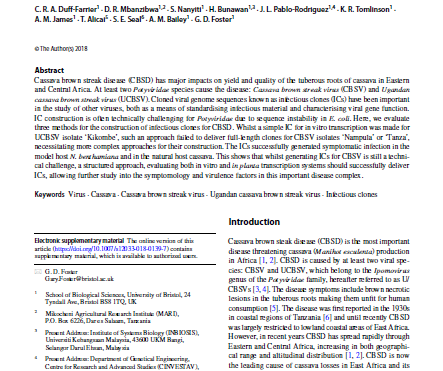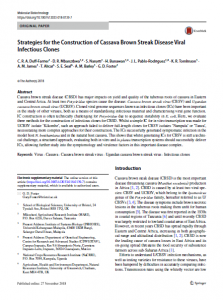Cassava brown streak disease (CBSD) has major impacts on yield and quality of the tuberous roots of cassava in Eastern and Central Africa. At least two Potyviridae species cause the disease: Cassava brown streak virus (CBSV) and Ugandan cassava brown streak virus (UCBSV). Cloned viral genome sequences known as infectious clones (ICs) have been important in the study of other viruses, both as a means of standardising infectious material and characterising viral gene function. IC construction is often technically challenging for Potyviridae due to sequence instability in E. coli. This study evaluates three methods for the construction of infectious clones for CBSD. Whilst a simple IC for in vitro transcription was made for UCBSV isolate ‘Kikombe’, such an approach failed to deliver full-length clones for CBSV isolates ‘Nampula’ or ‘Tanza’, necessitating more complex approaches for their construction. The ICs successfully generated symptomatic infection in the model host N. benthamiana and in the natural host cassava. This shows that whilst generating ICs for CBSV is still a technical challenge, a structured approach, evaluating both in vitro and in planta transcription systems should successfully deliver ICs, allowing further study into the symptomology and virulence factors in this important disease complex.
Region: Africa
Date published:
2018
Published by:
Molecular Biotechnology
Type of resource:
Journal article
Resource topic:
Cassava
Project/Programme: Not specific
Pest/Disease: Cassava brown streak virus
Pages:
9
File type:
External link (1.6 MB)




